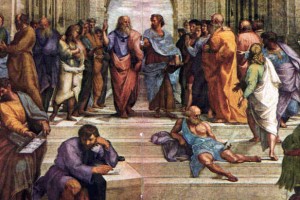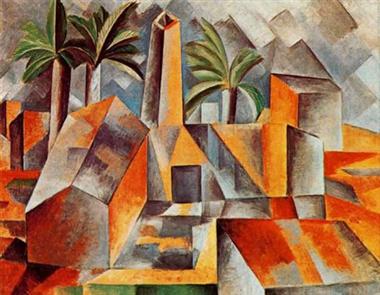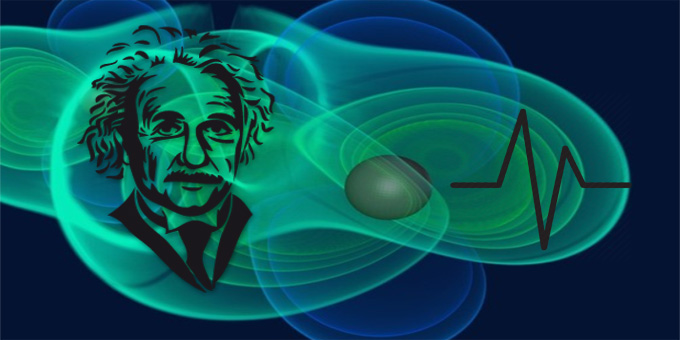SCIENCE AND SOCIETY IN THE EARLY TWENTIETH CENTURY
The first half of the twentieth century in human history was dominated by chain of events that heralded significant changes in world history as to redefine the era:World War I,nationalism,World War II,nuclear power ,decolonization and the Cold War,the birth of intergovernmental organizations and cultural homogenization through developments in emerging transportation and communications technology . The century had the first global-scale total wars between world powers across continents and oceans in two World Wars. Nationalism became a major political issue in the world in this period of the 20th century, acknowledged in international law along with the right of nations to self-determination, official decolonization in the mid-century, and nationalist-influenced armed regional-conflicts.
At the same time this century saw a major shift in the way that many people lived, with changes in politics, ideology, economics, society, culture, science, technology, and medicine. The 20th century may have seen more technological and scientific progress than all the other centuries combined since the dawn of civilization. Terms like ideology, world war, genocide, and nuclear war entered common usage. Scientific discoveries, such as the theory of relativity and quantum physics, profoundly changed the foundational models of physical science, forcing scientists to realize that the universe was more complex than previously believed, and dashing the hopes (or fears) at the end of the 19th century that the last few details of scientific knowledge were about to be filled in .
We start now to discover and think back together over this extraordinary period of human history.
Forum per lo scambio di informazioni tra docenti.
- Docente: Concetta Aprigliano
- Docente: Patrizia Baldo
- Docente: Laura Brosio
- Docente: Renato Caccavano
- Docente: Leslie Cameron-Curry
- Docente: Claudia Cotta Ramusino
- Docente: Carla Deorsola
- Docente: Teresa Di Crescenzo
- Docente: Maria Ferrari
- Docente: Guido Fontana
- Docente: Franca Torchia
Albert Einstein Max Planck
- Docente: Concetta Aprigliano
- Docente: Patrizia Baldo
- Docente: Rossella Bernascone
- Docente: Laura Brosio
- Docente: Renato Caccavano
- Docente: Leslie Cameron-Curry
- Docente: Bruna Cibrario
- Docente: Claudia Cotta Ramusino
- Docente: Carla Deorsola
- Docente: Teresa Di Crescenzo
- Docente: Maria Ferrari
- Docente: Guido Fontana
- Docente: Franca Torchia

- Docente: Concetta Aprigliano
- Docente: Patrizia Baldo
- Docente: Laura Brosio
- Docente: Renato Caccavano
- Docente: Leslie Cameron-Curry
- Docente: Claudia Cotta Ramusino
- Docente: Carla Deorsola
- Docente: Teresa Di Crescenzo
- Docente: Maria Ferrari
- Docente: Guido Fontana
- Docente: Franca Torchia
A simple emigrant - immigrant: Albert Einstein
Belonging to a Jewish family, born in Ulm, Germany, Friday 14 March 1879 (137 years ago) and died in Princeton Monday 18 April 1955 (60 years ago) , naturalized Swiss and US.
Since small showed a reserved character and, because of dyslexia, learned to speak very late.
The love he felt for science made him impatient at the rigid scholastic rules, with the inevitable consequences on its performance as a student in Munich [...] For strokes of luck of the family emigrated to Milano [...] Then, went for a year to undertake studies of repair at the Gymnasium in Aarau [...] after he entered at the Polytechnic of Zurich, and, graduated, in 1900 he began to work at the Patent Office in Bern, dedicating however much time to the study of physics, whose fruits gathered into three memories published in 1905.
One of these memories expounded the principles of the theory of Special Relativity , first act toward the general theory of relativity that later revolutionized the classical physics, reprocessing the Newtonian know.
In 1911 moved to Praga and 1914 was appointed director of the Institute of Physics of ,University of Berlin where he remained until 1933.
In 1916 publishes "The foundations of the theory of General Relativity".
In the 1921 obtained Nobel Prize in Physics for his work of 1905 on the explanation photoelectric effect "for contributions to theoretical physics, in particular for the discovery of the law of the photoelectric effect".
In January 1933, when Adolf Hitler he ascended to power, Einstein was momentarily to university of Princeton New Jersey, U.S. as guest professor .
On 7 April of the same year was promulgated the "law of the restoration of civil service", due to which all university professors of origin ebraica were dismissed so in October 1933, decided to move permanently in Stati Uniti as immigrant .
On 9 July 1955,from here he fought with passion against the danger of a nuclear war, presenting in London, along with the philosopher Bertrand Russell, a manifesto in favor of nuclear disarmament and the pacifist choice for humanity.
- Docente: Concetta Aprigliano
- Docente: Patrizia Baldo
- Docente: Laura Brosio
- Docente: Renato Caccavano
- Docente: Leslie Cameron-Curry
- Docente: Claudia Cotta Ramusino
- Docente: Carla Deorsola
- Docente: Teresa Di Crescenzo
- Docente: Maria Ferrari
- Docente: Guido Fontana
- Docente: Franca Torchia

- Docente: Concetta Aprigliano
- Docente: Patrizia Baldo
- Docente: Laura Brosio
- Docente: Renato Caccavano
- Docente: Leslie Cameron-Curry
- Docente: Claudia Cotta Ramusino
- Docente: Carla Deorsola
- Docente: Teresa Di Crescenzo
- Docente: Maria Ferrari
- Docente: Guido Fontana
- Docente: Franca Torchia
The Einsteinturm or Einstein Tower is an astrophysical observatory in the Albert Einstein Science Park. It is located on the summit of the Potsdam telegraphenberg. It was built from 1919 to 1921 and became operational in 1924. The telescope supports esperiments and observations to study and research Albert Einstein's relativity theory. He supported the construction and operation of the telescope but never worked in the tower. It is still a working solar observatory today and part of the Potsdam Astrophysical Institute. Light from the telescope is directed down through the shaft to the basement where the instruments and laboratory are located. The Einsteinturm is the first important building designed by the architect Erich Mendelsohn and it became his best-known building.
- Docente: Concetta Aprigliano
- Docente: Patrizia Baldo
- Docente: Laura Brosio
- Docente: Renato Caccavano
- Docente: Leslie Cameron-Curry
- Docente: Claudia Cotta Ramusino
- Docente: Carla Deorsola
- Docente: Teresa Di Crescenzo
- Docente: Maria Ferrari
- Docente: Guido Fontana
- Docente: Franca Torchia

The quantum paradigm shift in science, Einsteinian relativity and non-Euclidean geometry have changed our understanding of space and inspired artists’ and architects’ interest in attempting to visualise and creatively engage with the invisible and unknown co-ordinates and dimensions of reality and perception through revealing various fields of interaction between the environment, matter, technology and human beings, challenging thus, our conventional notions of space and built architecture as well as the functionality and morphology of the latter
- Docente: Concetta Aprigliano
- Docente: Patrizia Baldo
- Docente: Laura Brosio
- Docente: Renato Caccavano
- Docente: Leslie Cameron-Curry
- Docente: Claudia Cotta Ramusino
- Docente: Carla Deorsola
- Docente: Teresa Di Crescenzo
- Docente: Maria Ferrari
- Docente: Guido Fontana
- Docente: Franca Torchia

- Docente: Concetta Aprigliano
- Docente: Patrizia Baldo
- Docente: Laura Brosio
- Docente: Renato Caccavano
- Docente: Leslie Cameron-Curry
- Docente: Claudia Cotta Ramusino
- Docente: Carla Deorsola
- Docente: Teresa Di Crescenzo
- Docente: Maria Ferrari
- Docente: Guido Fontana
- Docente: Franca Torchia

- Docente: Concetta Aprigliano
- Docente: Patrizia Baldo
- Docente: Laura Brosio
- Docente: Renato Caccavano
- Docente: Leslie Cameron-Curry
- Docente: Claudia Cotta Ramusino
- Docente: Carla Deorsola
- Docente: Teresa Di Crescenzo
- Docente: Maria Ferrari
- Docente: Guido Fontana
- Docente: Franca Torchia
- Docente: Concetta Aprigliano
- Docente: Patrizia Baldo
- Docente: Laura Brosio
- Docente: Renato Caccavano
- Docente: Leslie Cameron-Curry
- Docente: Claudia Cotta Ramusino
- Docente: Carla Deorsola
- Docente: Teresa Di Crescenzo
- Docente: Maria Ferrari
- Docente: Guido Fontana
- Docente: Franca Torchia
